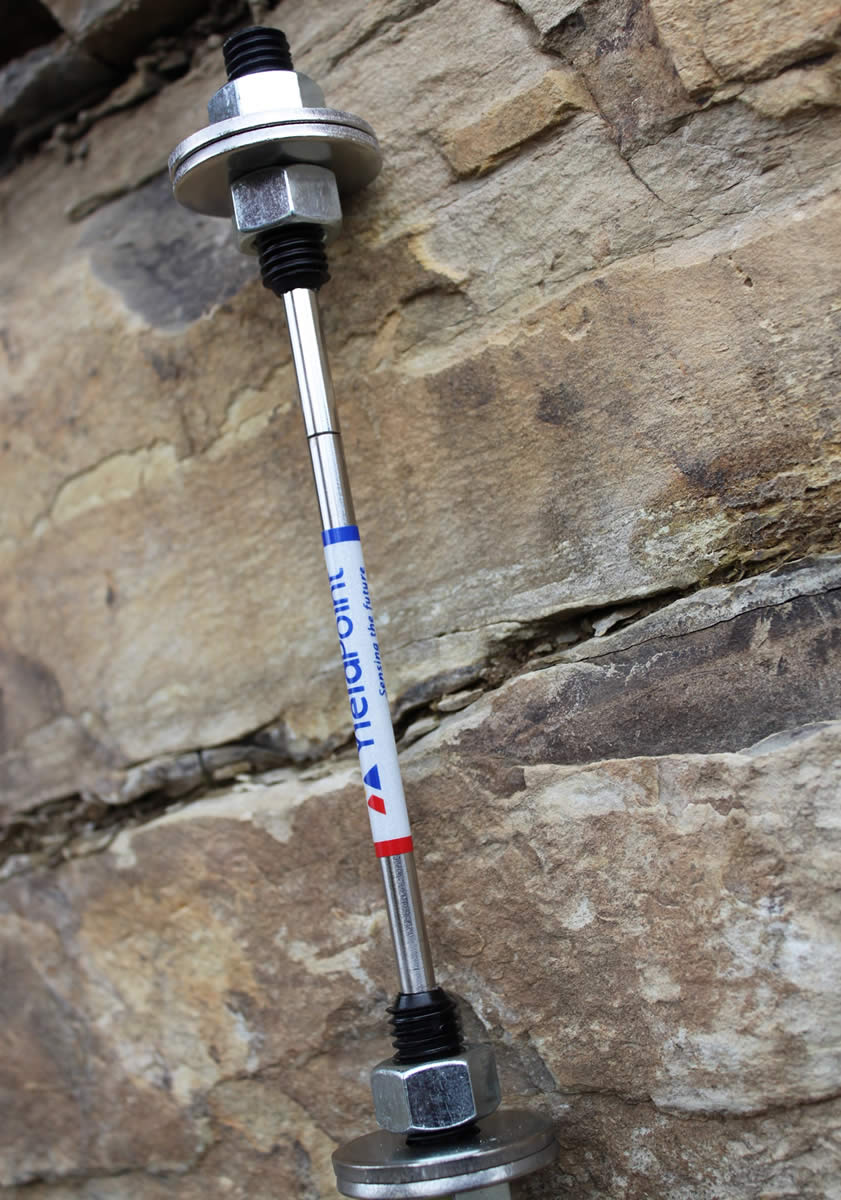YieldPoint’s d-micro is a high precision digital crackmeter with a 10mm range. It operates using an embedded microcontroller running the d-Tech firmware. It is most commonly used as a crackmeter in rock on the surface of concrete structures. d-micro has been used for applications such as:
- monitoring any individual or interface crack in a structure
- monitoring cracks in underground mines such as lunch rooms and garages
- monitoring cracks in parking garages
- monitoring cracks in dams under rehabilitation
- monitoring cracks in residential structures subjected to blast vibration and fracking vibration
- monitoring bridge-deck behaviour
- monitoring of pillars and posts
The instrument outputs readings directly in degrees C and microns which eliminates the necessity for expensive analog-to-digital conversion. Readings can also be made using the USB port of a laptop or tablet computer (BluPoint App). Long term, low power, data logging is possible using the low-cost BluLink or d4BluGateways . A Real-time plug-and-play network of d-micro sensors or of any combinations of any other YieldPoint Instruments can be built in minutes using the BluGateways or the Blu900 mesh. These features make solutions based on d-micro instruments significantly more cost-effective than those of competing products. d-micro can be easily installed and removed from all types of structures using the convenient corrosion-proof nylon connectors.

Technology:
The d-micro strain gauge is capable of 1 micron resolution over a range of 10mm. The gauge is attached to the structure using the #8-32 threaded rod at either end. The length of the sensor is 250mm and the diameter of the body is 7mm.
Signal Conditioning:
An on-board microcontroller provides temperature compensation, applies a 10-point calibration algorithm, and outputs an ASCII encoded RS485 (9600, 8, N, 1) signal.
Output Signal:
The output signal includes the instrument’s unique Sensor_ID, the Sensor_Type as well as the temperature and displacement data. The balanced differential RS485 output signal used is widely recognized for reliability in harsh environments. The signal can be routinely transmitted over 1,000m/3,000ft of lead-wire.
Features:
- Individually calibrated for highest accuracy
- High accuracy (0.5% FS) and resolution (0.01% FS =m 1 micron)
- Digital (d-Tech) 10mm stroke length
- Individual calibration with coefficients stored in memory.
- RS485 Output signal (9600,8,N,1) ASCII encoded
- Microcontroller provides output in real world units (mm and C)
- Unique ID facilitates plug-and- play networking
- Digital temperature sensor for accurate compensation
- Inductive, non-contact technology for immunity to hostile environments
- Easy to interface with BluLinks and d4 BluGateways (LTE-M or WiFi).
- Competitively priced
Datalogging:
Data from the d-micro can be collected using YieldPoint’s BluLink, and d4BluGateway (30,000 readings) dataloggers . A population of instruments can be monitored using the Blu900 mesh. The data-loggers require no configuration and are fully interchangeable with any other type of YieldPoint instrument.
Telemetry:
Clusters of (i) wired or (ii) BT5 enbled instruments can be monitored using d4BluGateway. Wifi/Ethernet or LTE-M BluGateways can autonomously backhaul readings to cloud based storage and visualization platforms (VantagePoint). For a mesh configuration of d-micros use the Blu900 telemetry system.
Configuration and local data download are provided by the BluPoint App.
Case Study: The Theban Necropolis in Luxor, Egypt
In 2019, Dr Matt Perras from York University contacted YieldPoint concerning monitoring of a shallow tomb in the Valley of Kings. The d-micro was modified so that it could be installed between pillars without be mechanically attached to the pillar. The aim was to measure micron scale changes in pillar deformation in order to understand how environmental factors impact the pillar condition.
The d-micros were connected to BluLinks which collected data and beaconed to a cellular Gateway. Results from the project have been informative and the York University team has been training an AI system to provide predictive analysis.



